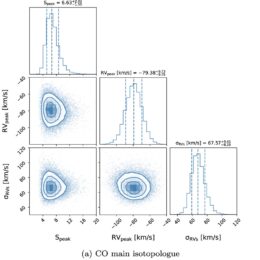As we approach the second anniversary of JWST’s triumphant liftoff and migration into deep space, astronomers are starting to get a handle on how to approach the data it beams back. The unprecedented precision and stability of its images and spectra necessitated the invention of new analysis tools and motivated reexaminations of old ones. Recently, a team of astronomers made significant progress in this effort: using methods usually reserved for large ground-based telescopes, they successfully detected carbon monoxide in an exoplanet’s atmosphere.
One Positive, One Inconclusive
About one year ago, a large collaboration of astronomers published the first analyses of several observations taken with JWST’s Near Infrared Spectrograph of a planet named WASP-39 b. This world, a scorchingly hot Jupiter-sized planet that lives just 11 stellar radii from its host star, was an early target for exoplanet astronomers looking to characterize atmospheres subjected to extreme conditions. One of these observations revealed carbon monoxide (CO) floating in the atmosphere. Another, which focused on a smaller wavelength range, did not see the same statistically significant signal.
This was a puzzling mismatch, and an unfortunate one: the abundance of CO is a key ingredient in models that predict how far away a planet was born from its star, and without a detection in both wavelength ranges, any attempt to constrain that distance would be forced to accept large uncertainties. Thus motivated to check the data again, a team led by Emma Esparza-Borges (Institute of Astrophysics of the Canary Islands) decided to take a new angle of attack to extract this faint, but suspected, signal.
Cross-Correlation
The team’s key insight was that they could pretend that JWST was actually a high-resolution ground-based spectrograph. Historically, the techniques used to analyze an exoplanet’s atmosphere depended on the facility at which the data were taken. Ground-based spectrographs can have much higher resolutions than their space-based counterparts, meaning they can more cleanly resolve narrow spectral features. To determine which molecules are present using a ground-based instrument, astronomers usually construct high-resolution “templates” of different species, then compare these templates to the actual data to see if, and where, they line up the best. This technique is known as cross-correlation, and it has been a workhorse technique for extracting atmosphere compositions for many years.

Steps detailing the construction of CO templates that the team then compared to the data. Click to enlarge. [Esparza-Borges et al. 2023]
Luckily, JWST is extremely stable: even after staring at a target for many hours, it is unlikely to have drifted by more than a fraction of a pixel, and the temperature is unlikely to have changed by more than a fraction of a fraction of a degree. Realizing this, Esparza-Borges and colleagues decided to take cross-correlation for a spin on JWST data for the first time.
Alarm Triggered
When the dust settled and their computers stopped churning, the team was left with a 6.6–7.5-sigma detection of CO in WASP-39 b’s atmosphere. This not only resolved a year-old mystery, it also validated a new path for future analysis. The next time an astronomer puzzles over a JWST spectrum, perhaps they’ll reach for the cross-correlation approach.Citation
“Detection of Carbon Monoxide in the Atmosphere of WASP-39b Applying Standard Cross-correlation Techniques to JWST NIRSpec G395H Data,” Emma Esparza-Borges et al 2023 ApJL 955 L19. doi:10.3847/2041-8213/acf27b


